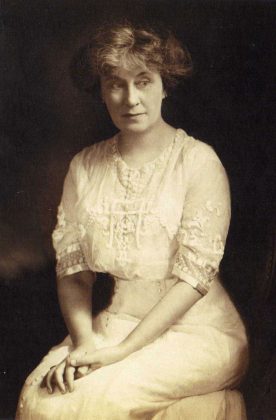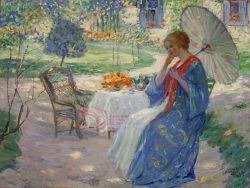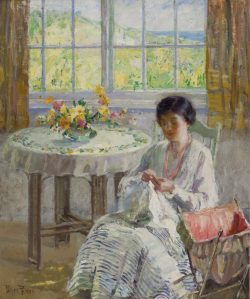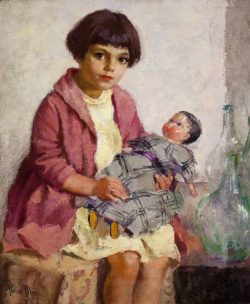Pauline Palmer, from an undated photograph, courtesy Richard Norton Gallery, Chicago.

Pauline Palmer 1867–1938
Still arguably the best-known Chicago woman artist of her time, Pauline Lennards (or Lennard) Palmer was born in McHenry, Illinois, attended school in Milwaukee, and taught art in Chicago public schools. Her marriage in 1891 to prosperous Chicago physician Albert Palmer enabled her to have a fulltime career as an artist. Palmer studied at the Art Institute of Chicago and began exhibiting there in 1896; she completed her formal training with three years of study in art academies in Paris. On her return to Chicago in 1902, Palmer opened a portrait studio and she quickly established herself as a fixture in the city’s art world. She exhibited regularly in the Art Institute’s three annual exhibitions and in important national and international exhibitions, notably the prestigious Paris Salon. At the Art Institute, she won numerous prizes. Her first solo exhibition was held there in 1913 at the same time as the famous so-called Armory Show of modernist art.
In 1917, Palmer joined the influential artists’ community in the Tree Studios building on Chicago’s Near North Side. A leader among local artists, she was the first woman to serve as president of the Chicago Society of Artists, between 1918 and 1921, and she led the Association of Chicago Painters and Sculptors from 1929 to 1931. Palmer and her husband traveled widely, making several visits to Europe. In 1910 she worked in Giverny, France, an international center of impressionist practice where she absorbed the influence of American figural painter Richard Emil Miller. Beginning in 1915, the Palmers spent summers in Provincetown, Massachusetts, a popular seasonal colony for both modernist and conservative artists; after her husband’s death in 1920 she spent more time there, making light-filled figural and landscape paintings.
Palmer was adept in oil, pastel, tempera, and watercolor. In addition to portraits, she painted numerous studies of women and children as well as landscapes. Her work matured from a dark, tonal, academic approach to a conservative impressionism in which forms are suggested by distinct brushstrokes of brilliant color that emphasize the effects of full sunlight. Known as “Chicago’s painter lady,” Palmer was a perennial local favorite for her pleasing subjects and accessible style. In 1926 Chicago Tribune art critic Eleanor Jewett described her as one of “the two most popular and best liked artists belonging to Chicago’s art colony” (Frederic M. Grant was the other).i At the Art Institute, notwithstanding modernism’s dominance by the 1930s, Palmer was honored with a solo memorial exhibition the year after her death, as well as with one at the Union League Club of Chicago.
Wendy Greenhouse, PhD
i Eleanor Jewett, “Art and Artists,” Chicago Tribune, Mar. 14, 1926.


